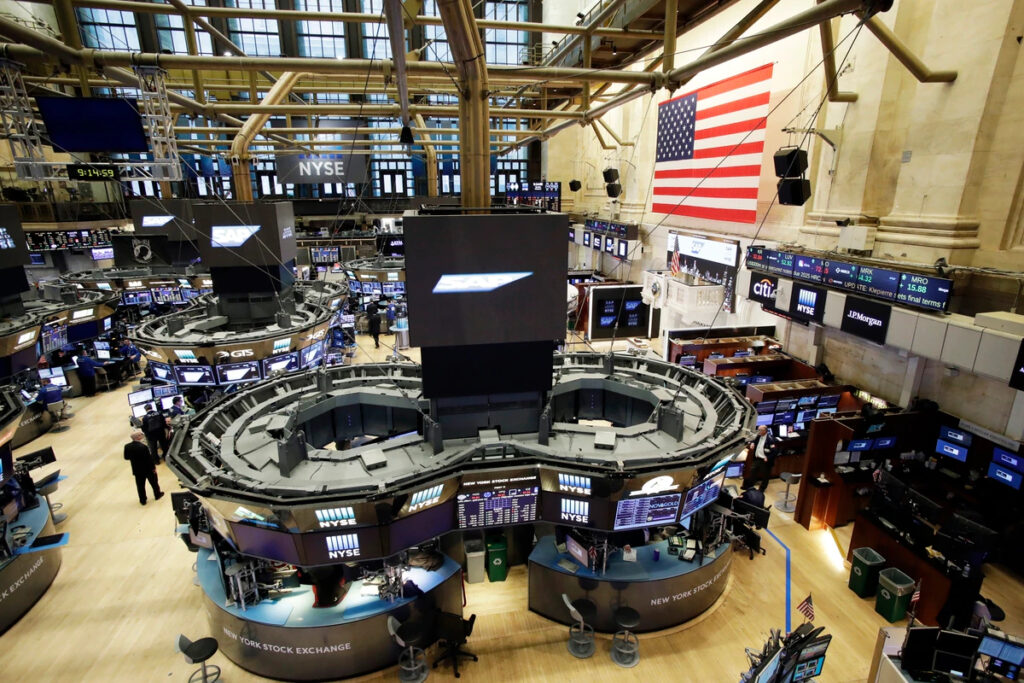Even in a Challenging Period, Publicly Traded Defense Stocks Thrive
MILITARISM, 19 Jul 2021
Scott Sacknoff | Defense News - TRANSCEND Media Service

As 2020 moved into 2021, the outlook for defense sector firms improved, according to Scott Sacknoff of the SPADE Defense Index. (Mark Lennihan/AP)
12 Jul 2021 – From a business perspective, 2020 will be remembered as an incredibly challenging and volatile year. Yet by mid-2021, as society (at least in the United States) began the process of returning to normal, investment returns of the defense sector rebounded to historic highs. This remarkable indicator demonstrates just how strong the sector has been.
But long-time investors would not be surprised by this latest rebound. In each of the previous two decades, 2000-2009 and 2010-2019, the SPADE Defense Index outperformed the S&P 500 by more than 120 percent.
Companies around the world dealt with the impact of a pandemic that shut down both global and local trade, and the defense sector was no different. Firms operating in defense and adjacent markets — such as aerospace — were further challenged by a manufacturing shutdown of the Boeing 737 Max commercial aircraft, a collapse in global commercial air travel and transport (up to 90 percent at times), and a U.S. political election that saw a change in control at the White House and the House of Representatives.
As firms struggled to maintain a healthy workforce and sustain operations during a slowing economic environment, they also had to manage a global supplier base with similar problems. The U.S. Department of Defense, recognizing that defense production capacity is vital to readiness, took multiple actions to assist the defense-industrial base, and should be commended for doing so.
Much of the sector was deemed to have essential workers, and many manufacturing plants were declared critical infrastructures. This enabled the agency to allocate more than $10 billion from COVID-19 economic support packages provided by Congress to assist manufacturers experiencing hardship from the aerospace slowdown and to accelerate contract payments to prime contractors who, in turn, accelerated payments to their subcontractors.
As 2020 moved into 2021, the outlook for defense sector firms improved. Global regulatory agencies approved the 737 Max to return to flight, commercial air traffic began an uptrend and new commercial aircraft orders were placed. Additionally, the White House budget proposal for fiscal 2022 shows continued support for the Pentagon and a willingness to invest in new technologies, which will enable defense firms to better compete on a global scale.
The stability and support from the defense industry’s largest customer have encouraged companies to maintain their strategy for growth. The announcements of mergers and acquisitions that will impact the Top 100 list continue. High-profile deals for Cubic Corporation, FLIR Systems, Perspecta and DynCorp International have already closed. A proposed deal for Lockheed Martin to acquire Aerojet Rocketdyne awaits regulatory approval later this year.
Combined, these recent positive actions have been reflected in stock prices. During 2020, the SPADE Defense Index was flat on the year, while its constituent stocks provided returns to investors that ranged from a gain of 146 percent (Maxar Technologies) to a loss of 55 percent (Viasat).
This year, through June 15, 2021, the index gained 14 percent, outperforming the broader U.S. market. Such performance is not atypical: Over the past 21 years, the sector outperformed in 17 of them, many times by double digits. It is one reason why funds, such as Invesco’s Aerospace & Defense ETF, have invested a collective $5 billion in assets in the sector.
Publicly traded defense companies represent more than 70 percent of Defense News’ latest Top 100 list, and 80 percent of those are based in the United States. This provides a wealth of data and a measure of transparency on a sector that has shown to be a solid investment in good times as well as troubled ones.
_____________________________________________
Scott Sacknoff manages the SPADE Defense Index, a modified capitalization-weighted index made up of companies operating in the defense, homeland security and government space sectors.
Tags: Arms Industry, Arms Trade, Atomic Weapons, Catastrophe Capitalism, Competition, Defense, Disaster Capitalism, Military Industrial Complex, Military Supremacy, Predatory Capitalism, Savage Capitalism, US Military, Weapons
DISCLAIMER: The statements, views and opinions expressed in pieces republished here are solely those of the authors and do not necessarily represent those of TMS. In accordance with title 17 U.S.C. section 107, this material is distributed without profit to those who have expressed a prior interest in receiving the included information for research and educational purposes. TMS has no affiliation whatsoever with the originator of this article nor is TMS endorsed or sponsored by the originator. “GO TO ORIGINAL” links are provided as a convenience to our readers and allow for verification of authenticity. However, as originating pages are often updated by their originating host sites, the versions posted may not match the versions our readers view when clicking the “GO TO ORIGINAL” links. This site contains copyrighted material the use of which has not always been specifically authorized by the copyright owner. We are making such material available in our efforts to advance understanding of environmental, political, human rights, economic, democracy, scientific, and social justice issues, etc. We believe this constitutes a ‘fair use’ of any such copyrighted material as provided for in section 107 of the US Copyright Law. In accordance with Title 17 U.S.C. Section 107, the material on this site is distributed without profit to those who have expressed a prior interest in receiving the included information for research and educational purposes. For more information go to: http://www.law.cornell.edu/uscode/17/107.shtml. If you wish to use copyrighted material from this site for purposes of your own that go beyond ‘fair use’, you must obtain permission from the copyright owner.